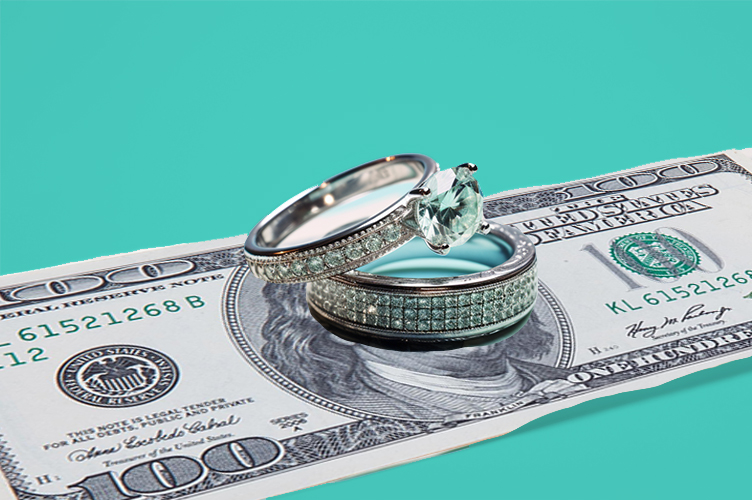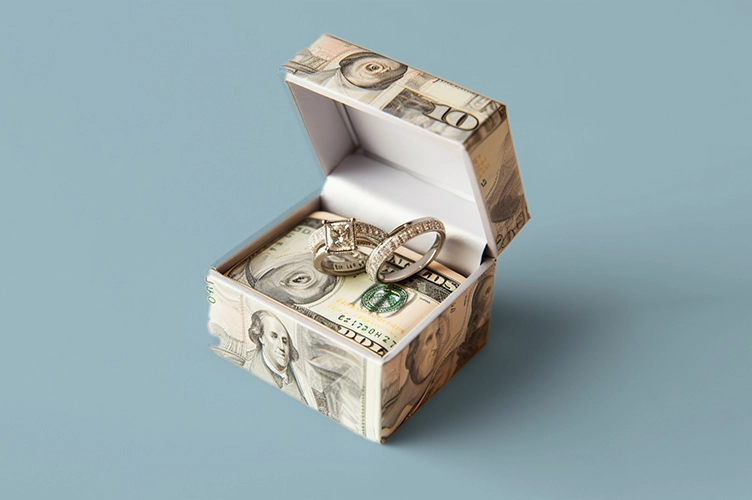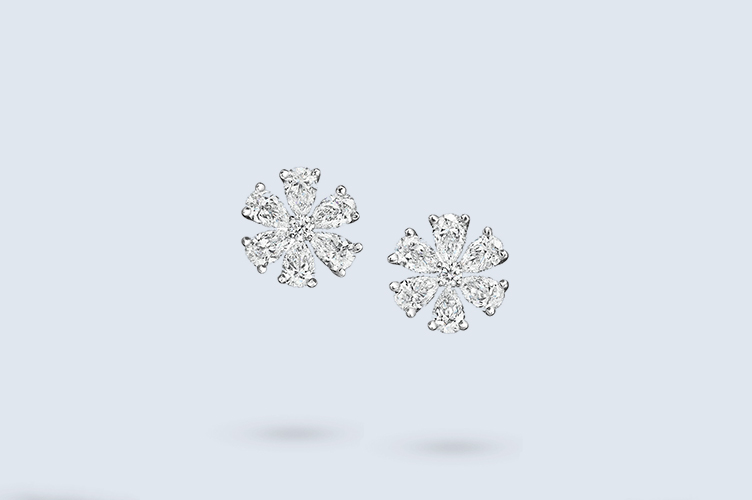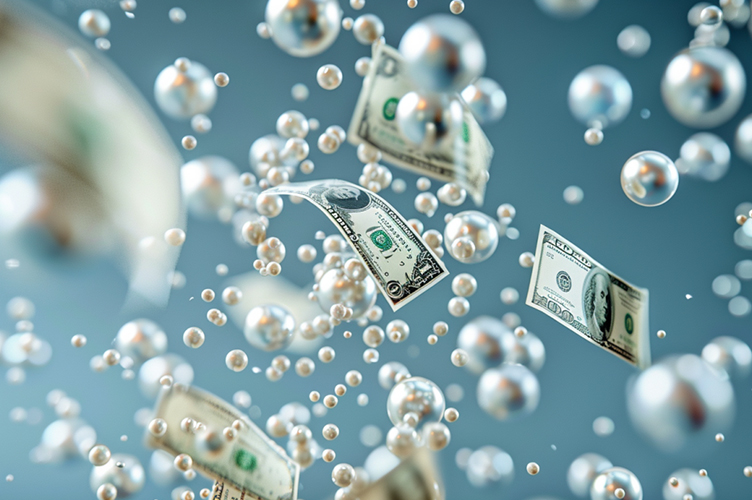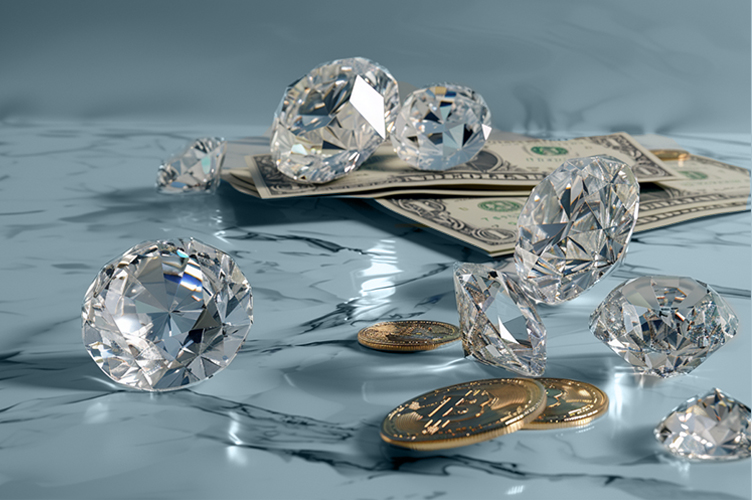Mined Diamonds vs. Lab Diamonds: How Much Cheaper are Lab Grown Diamonds?
For some jewelry shoppers, diamond sourcing is of no concern. They’re after a great-looking piece of jewelry featuring a high-quality diamond, and they don’t care about where the diamond came from.
However, those intrigued by the thought of purchasing a lab grown diamond have likely heard about just a few of the ways lab grown diamonds stand apart from their au naturel siblings. There’s, of course, the ethical difference, but then there’s also the cost difference.
However, just how much cheaper are lab diamonds? Is it enough to make a difference? Suppose you’re not necessarily interested in the ethical question behind natural diamonds vs. lab grown diamonds. Are the cost savings significant enough to sway you?
What You Will Learn
Are Lab-Grown Diamonds Cheaper? Lab Diamonds vs. Mined Diamonds Cost
On average, a manufactured diamond can be less than half the price of a mined diamond. However, the percentage differs according to a few factors. For example, when it comes to larger diamonds, the cost difference between a lab created diamond and a mined diamond will be even more significant and your cost savings more considerable, all because large, natural diamonds are rare. In contrast, large, lab created diamonds are not.
Typically, you can expect the cost of synthetic diamonds to vary widely, from under $1,000 per carat to nearly $10,000 per carat, depending on the size of the diamond, as well as the various factors such as color and clarity that also determine lab grown diamond prices and value.
Do note that the cost of a lab diamond is lower than that of a mined diamond; the resale value of quality lab diamonds on the diamond market is likewise lower.
How is Lab Diamond Value Determined?
So, how do jewelers and similar sellers determine lab created diamonds’ worth? The valuation process is very similar to the valuation process used to determine the value of a mined diamond. It all comes down to the four C’s.
Within the diamond mining industry, “the four C’s” refer to the four main components determining a diamond’s worth: carat, clarity, color, and cut.
Carat weight
The most important of the four C’s carat is the diamond’s weight. Natural and lab diamonds are the same weight, so a 1-carat natural diamond will look as large as a 1-carat lab diamond. However, as mentioned above, while natural diamonds increase significantly in price the larger they are — and because larger are rarer — lab grown diamonds do not exhibit the same steep increase in price and value.
Clarity
A diamond’s clarity is just that: how clear it is. The great thing about lab diamonds? Making diamonds in a controlled environment allows developers to reduce the clarity flaws you might typically see in a natural diamond. Because of this, if clarity (rather than size) is your primary concern when picking a diamond for an engagement ring or other use, you may be able to find a better quality diamond (with fewer flaws) at a lower price point if you go the lab grown route.
Cut
Similarly, lab grown diamonds can have higher quality cuts than natural diamonds. So you can get a lab grown diamond with the exact cut you want for a more affordable price than you might if you were shopping for a natural diamond.
(And while cut isn’t the same thing as shape, you’ll notice that specific shapes of lab grown diamonds are equally affordable, whereas some shapes of natural diamonds are significantly more expensive than others.)
Color
And, lastly — as you could probably guess — it’s easier to control diamond color when creating a diamond in a lab, which means you can find a diamond with the color (or lack thereof) that you want at an agreeable price point, compared to what you might have to spend for a natural diamond with an equal color grading.
Other Factors That Affect Lab Grown Diamond Prices
Beyond just the four C’s, other factors can also impact lab grown diamond prices, including:
- Supply
Because lab grown diamonds come from a lab, their supply is controlled. In contrast, natural diamonds require millions of years to form within the earth and are strictly limited in supply.
- Demand
While all types of diamonds are easier to grow in a lab than they are to mine in nature, this doesn’t negate the fact that some diamonds are still more popular than others. Because of this, you may find that those more in-demand diamonds are costly.
- Production
Growing a diamond in a lab isn’t an affordable task that you could undertake at home without experience. The thousands of dollars you pay for your lab grown diamond covers the costs of the specialized expertise and equipment needed.
- Competition
While demand and production may increase the price of lab grown diamonds, competition helps drive that cost down. With more and more online diamond retailers offering lab grown diamonds, shoppers have more choices than ever, which inspires some retailers to offer special deals and savings.
FAQs: Lab Grown Diamonds in the Diamond Industry
Have more questions? TL;DR? Here’s a quick rundown of everything you need to know.
What makes diamond mining so questionable for some?
Traditional diamond mining can be destructive to the surrounding environment and unethical due to labor practices and, in some cases, conflicts within the geographical areas of sourcing diamonds.
Are lab grown diamonds a good fit for engagement rings?
Yes! A lab grown diamond is a perfect fit for an engagement ring (or any other fine jewelry). It’s estimated that 10% of all engagement rings sold feature lab grown diamonds.
What are lab grown diamonds called?
Lab grown diamonds can go by several other names, including manufactured diamonds, synthetic diamonds, cultured diamonds, man-made diamonds, and others.
Are lab grown diamonds real?
Yes! Lab grown diamonds take form when a diamond seed is under high pressure to replicate the processes in a few weeks that would usually occur under the Earth’s crust for thousands of years. The physical properties of the lab grown and earth mined diamonds are the same.
Natural or Lab Grown, Protect Your Diamonds
Whether your diamond jewelry features mined diamonds or lab grown diamonds, keep your favorite pieces protected with the right jewelry insurance. Homeowners insurance won’t always reimburse you for the full (or any) cost of jewelry that’s damaged, stolen, or mysteriously missing — but BriteCo will.
Learn more about our coverage and get your easy quote today.
Also Check:
The History of Lab Grown Diamonds | BriteCo Jewelry Insurance
See How Much Larger a Diamond You Can Get with Lab-Grown
Disadvantages of Lab-Grown Diamonds | BriteCo Jewelry Insurance
The Best Lab Grown Diamond Rings | BriteCo Jewelry Insurance
Do Lab Grown Diamonds Pass a Diamond Tester?

